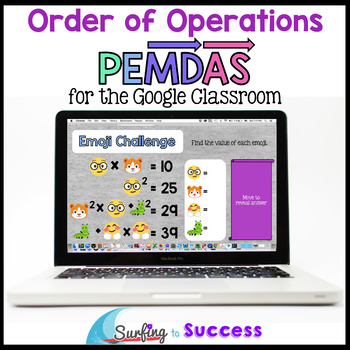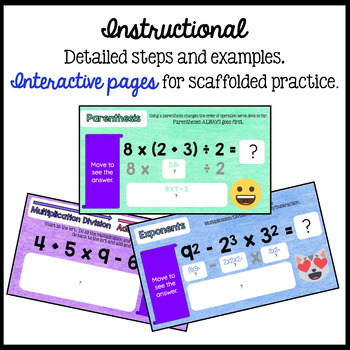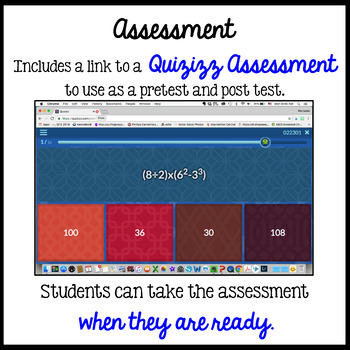Order of Operations PEMDAS Interactive Math for the Google Classroom
- PDF
- Google Apps™
- Internet Activities

What educators are saying
Also included in
- Digital interactive math resources for your Google Classroom. This bundle has math resources that fifth grade students can use with Google Slides. They can focus on one problem at a time. Digital resources can be so helpful because the color coding helps students focus on one part at a time.Price $43.20Original Price $48.00Save $4.80
Description
Works well for Distance Learning! PEMDAS is a common acronym for the Order of Operations. This digital resource for the Google classroom, is scaffolded to encourage independent learning. Students practice progressively more challenging order of operations problems including Addition & Subtraction, Multiplication & Division, parentheses and exponents.
Students practice scaffolded problems. Part of the problem is done for them at first to demonstrate the order, then they move to doing the complete problems independently.
This digital resource shows a slight modification. Multiplication and division are actually done from left to right. Addition and subtraction is also done from left to right. To show this, Multiplication and Division are written on the same line with an arrow from left to right. Addition and Subtraction are written on the same line from left to right.
Each section ends with an “EmojiChallenge.” In the emoji challenge, there are 3-4 math problems with emojis and only a number provided in the answer. Students solve these logic problems to identify what number is represented by each emoji. There are two resource links. One has a hidden answer key for the Emoji Challenges. One does not have the answer key provided for the students for the Emoji Challenges. You can choose which to assign. If you use the one that doesn’t give the answers, you could have a contest to see who can solve it.
Slide 1 Title Slide
Slides 2-8: Addition and Subtractions (left to right)
Slide 9 Addition and Subtraction Emoji Challenge
Slides 10-16 Multiplication and Division (left to right)
Slide 17 Multiplication and Division Emoji Challenge
Slide 18-24 Multiplication & Division / Addition & Subtraction Mixed Practice
Slide 25 Emoji Challenge
Slide 26-32 Exponents (and X÷+-)
Slide 33 Emoji Challenge
Slide 34-40 Parenthesis (all of PEMDAS)
Slide 41 Emoji Challenge
Slide 42 Order of Operations Review
Slides 43-45 Optional Bonus Slides for Early Finishers (Links to online PEMDAS games and videos)
This packet is designed to introduce the concept of Order of Operations. Common Core 5.OA.1, 6.EE.A.1, 6.EE.A.2c, 6.EE.A.3
If you prefer a paper resource, check out my other Order of Operations resource with worksheets and foldable.






